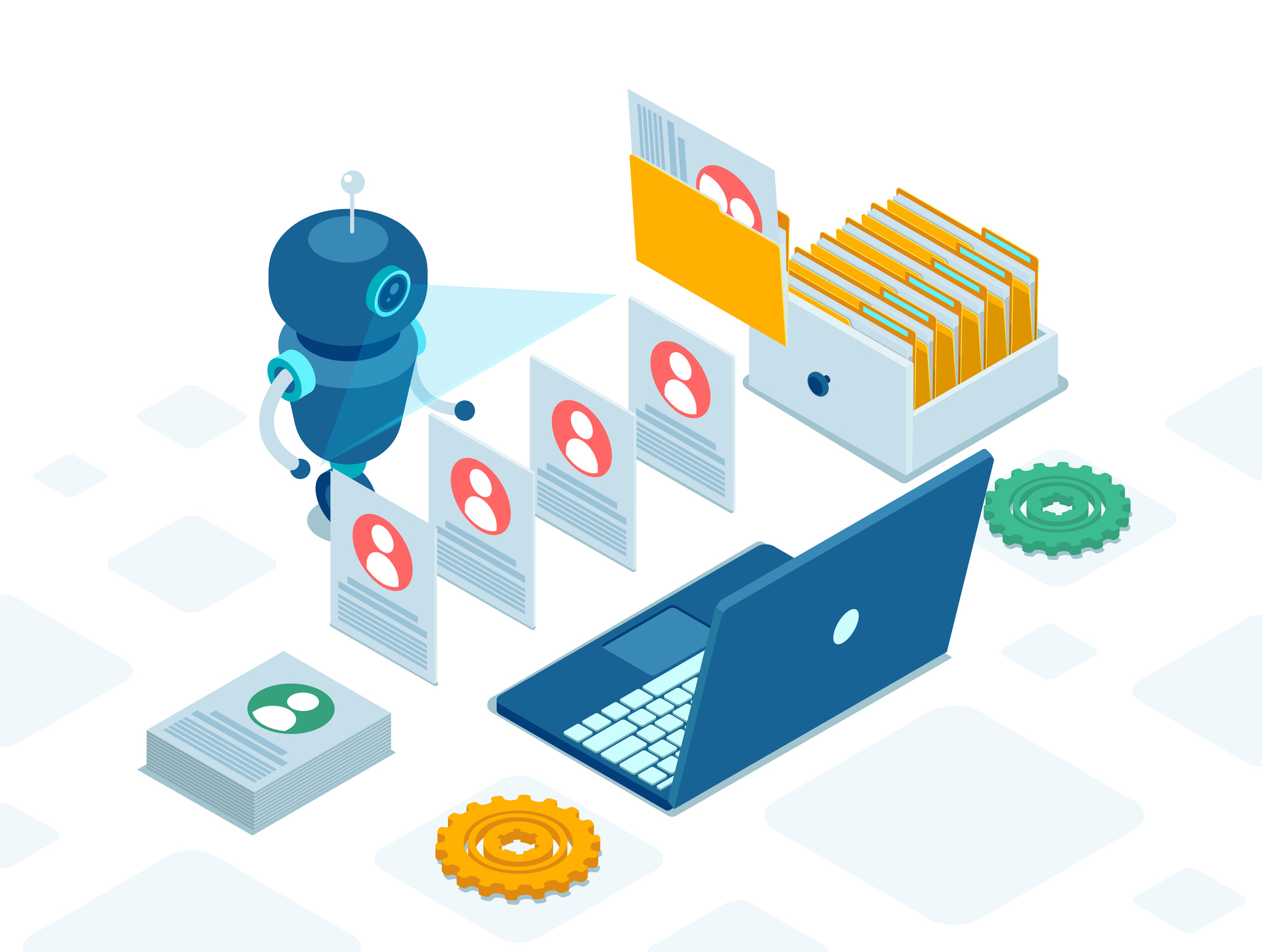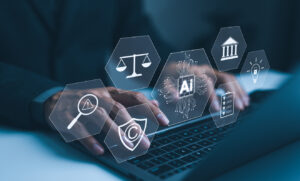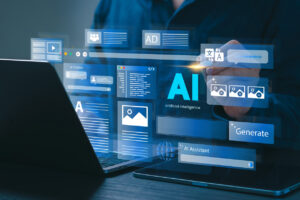Balancing risk and reward: GenAI in HR strategy
Generative AI revolutionizes HR with creativity, productivity and automation.

“The future is already here — it’s just not evenly distributed.”
The quote, attributed to science-fiction writer William Gibson, perfectly describes what tends to happen when technology leaps forward. Whether it’s a smartphone or the internet, what was once strange and inaccessible to many eventually becomes something everyone can’t imagine living without. Now, we’re seeing this scenario play out once again with the rise of generative artificial intelligence.
No longer a far-flung idea, GenAI is transforming how companies do business. The International Data Corporation estimates enterprises around the world will spend $151.1 billion on GenAI solutions by 2027. That’s up nearly 680% compared with investments made in 2023.
“The hype around GenAI is proliferating, and so is HR leaders’ interest in this technology. Seventy-six percent of HR leaders agree they will be lagging in organizational success if they do not adopt and implement generative AI in the next 12 to 24 months,” according to Gartner research.
Getting a solid grasp on how the tool can enhance creativity and boost productivity, therefore, is crucial. Read on to discover how HR professionals can benefit from using GenAI today.
Spark creativity
Feeling stuck and uninspired? Not sure where to start? Whether it’s writing a new job posting or crafting a work-from-home policy, GenAI can help put things in motion.
With tools such as ChatGPT and Google’s Gemini, HR professionals can do everything from rephrasing sentences to looking up industry benchmarks to producing summaries of complex topics in a language everyone can understand. If prompted, the technology can spit out an entire rough draft in seconds, too.
Consider open enrollment. It’s a critical season that requires employees to read their emails, follow instructions and act within a set timeframe.
GenAI can assist by providing appealing subject lines and constructive feedback on messaging. It can even offer a schedule to help HR professionals navigate the weeks ahead in a way that’s most likely to increase employee engagement.
“Start learning,” says Ashley Varney, SHRM-CP, PoliteMail’s Director of Human Resources. “Play around. Ask questions and see how it actually works.”
Task automation for job applicants
Time management is crucial to any successful HR professional. GenAI can step in and do some of the heavy lifting when it comes to tedious and time-consuming tasks, such as creating onboarding documents, writing standard interview questions or offer letters, and summarizing documents.
GenAI can also assist with navigating job submissions, creating responses to validate qualified candidates, and making job recommendations based on skill sets. Chatbots are quickly becoming a standard tool for entry-level job screening and recruitment.
Make it your own
Beyond grasping the basics, HR professionals can tailor GenAI to their specific needs.
Let’s revisit open enrollment. Older employees near retirement are more likely to respond to a different call to action than younger employees just entering the workforce. The two groups have unique needs and outlooks on life. GenAI can create custom messaging designed to speak to each segment.
The same goes for employees working in different countries. Someone in Canada, say, will be dealing with a different healthcare system than someone working in America. Communicating in a manner that’s both personal and relevant to the receiver can do wonders.
Some companies serious about GenAI have begun building so-called prompt libraries — an archive of standard commands and queries meant to ensure the technology provides consistent results with even greater precision. This can save employees time and avoid the confusion that comes from starting from scratch each time they use the tool.
Integration with existing tools is another avenue to getting the most from GenAI. A Salesforce survey, for example, reveals that 45% of people would use GenAI more if it were incorporated into the services and devices they already use.
This is the thinking behind PoliteMail’s integration with Microsoft 365, which empowers communicators with the tools they need in an easily accessible program. Because PoliteMail lives inside Outlook, users can utilize Microsoft’s AI-powered tool Copilot and reap the benefits of its content generation and editing system.
Risks and challenges
Despite the many benefits of GenAI, caution is warranted.
Questions about copyright infringement and possible regulation remain unanswered. In addition to not being trained on how the technology works and how it can influence their work, many workers do not know how to mitigate the risks associated with its use in the workplace. Providing training on the responsible and ethical use of GenAI will be paramount, including how to prevent bias, ensure accuracy and avoid using confidential company data to model data.
Privacy and security are another concern. Some firms discourage their staff from entering proprietary statistics or sensitive employee data into GenAI tools, as it’s unclear how this material is stored and who has access to it.
The technology can also produce biased results and outright inaccurate information. Some data used to train an AI model may come from unreliable sources such as social media channels or Wikipedia. According to Innovation Insight: Generative AI in HR, a report from Gartner, “Unreliable or skewed data can propagate bias and potentially toxic content. Accordingly, 53% of HR leaders are worried about bias and discrimination in GenAI.”
“GenAI is a great place to start, but it should never be your final draft,” says Varney. “Human intervention is necessary.”
Prepare for constant change
As powerful as GenAI is today, it’s only going to get more advanced in the years ahead.
Text-generated images will usurp stock photography. Automation will fulfill more tasks. Sure enough, 75% of people who use GenAI are looking for ways to automate their work responsibilities and communications, according to figures from Salesforce.
Corporations will be responsible for training their employees on using GenAI in an effective yet ethical manner. To avoid some of the risks such as violating copyright laws or leaking proprietary company data, some organizations have created “AI playgrounds” which allow employees to learn and master the technology in a practice environment.
Varney, therefore, advises other HR leaders to start dipping their toes in the water now to avoid being thrown into the deep end later.
As she put it: “Prepare your workforce, as AI literacy is bound to be a skill requirement in the future.”






